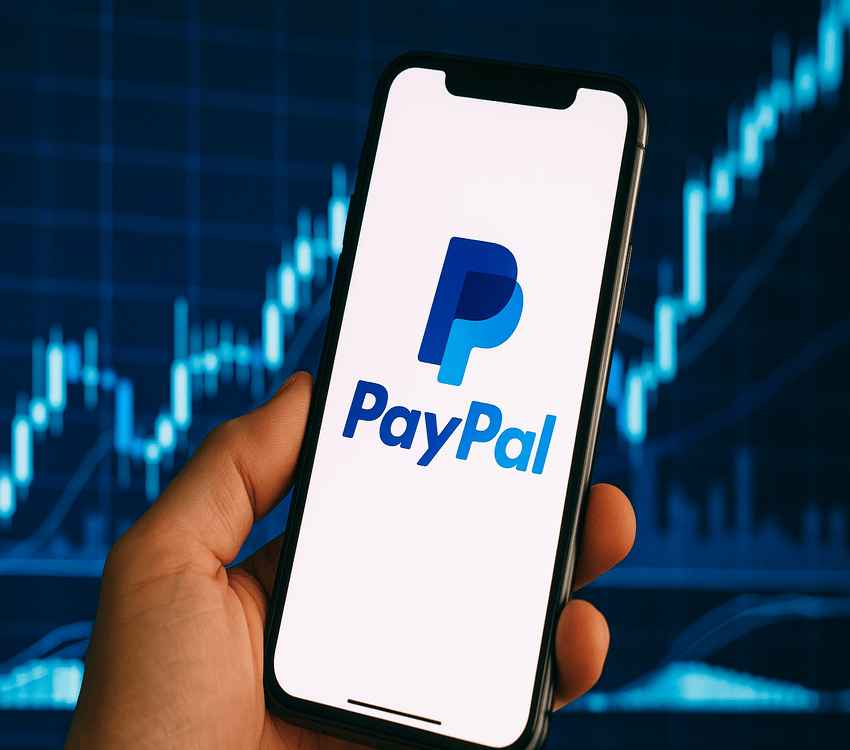Continue Reading With Our 7-Day Free Trial
The commerce landscape is about to undergo a structural transformation as PayPal and Alphabet’s Google join forces in a multi-pronged AI-driven payments partnership launching in Q4 2025. Announced in September, the alliance will embed PayPal’s checkout experience directly into Google’s ecosystem—across Google Cloud, Google Ads, Google Play, and select consumer-facing properties. At the same time, the two companies are co-developing AI frameworks to power agent-led transactions, where autonomous digital agents make purchases on a user’s behalf using PayPal data. The collaboration expands on Google’s recently launched “agent payments protocol,” aimed at securing agent-led commerce while ensuring proper risk controls. With PayPal’s 400 million+ consumer base and Google’s unmatched reach, the partnership lays the foundation for the next evolution in online shopping—one that’s crypto-ready, data-rich, and driven by AI. As product rollouts begin this quarter, the initiative is expected to influence both near-term user engagement and long-term platform monetization for the two tech giants.
AI Agents Take The Wheel
One of the most disruptive shifts introduced by this partnership is the formalization of agent-led commerce, wherein autonomous AI agents transact on behalf of users. Google’s new agent payments protocol—announced days before the PayPal deal—lays the foundation for enabling machine-to-machine transactions with embedded risk, compliance, and authentication layers. Within this new framework, PayPal’s role is pivotal. With over two decades of data on consumer transaction history, risk modeling, and digital wallet usage, PayPal provides the backend logic required to train AI agents to make intelligent, preference-aligned purchases for users. For instance, an AI agent managing a family’s back-to-school shopping could scan Google product listings, optimize prices based on historical transaction data, apply promo codes, and execute payment—all autonomously via PayPal. This concept, known as agentic commerce, has already seen early traction; AI firm Perplexity previously tapped PayPal to power its own agent-led shopping experiences. The companies are now jointly exploring how to create universal standards so that merchants, customers, and AI agents can interact seamlessly without compromising on security. These agentic systems will rely on PayPal’s historical datasets to infer user preferences and make real-time decisions, effectively becoming personalized procurement bots. However, implementing such systems at scale raises questions around liability, false positives in fraud detection, and the robustness of consumer safeguards—challenges both companies will need to address in their rollout phase. Nevertheless, the inclusion of PayPal in Google’s agent protocol suggests that this new paradigm will not remain theoretical for long. With test launches expected this quarter, Q4 could mark the beginning of truly autonomous shopping.
PayPal Checkout Goes Google
PayPal’s checkout infrastructure is now being embedded directly into high-traffic Google products including Google Cloud, Google Ads, and Google Play. This integration gives PayPal Enterprise Payments access to handle card transactions in some of the most monetized segments of Google’s business. It also extends PayPal’s reach into areas where it previously lacked first-party visibility. In return, Google benefits from a checkout experience that over 400 million global users already trust, improving conversion rates, reducing friction, and enhancing the user experience across Android and browser-based properties. From a technical standpoint, PayPal’s integration brings along smart routing features, fraud detection capabilities, and tokenization protocols that are tightly coupled with its existing wallet and credit services. This opens up opportunities for new monetization models, such as embedded finance offerings or loyalty-based checkout flows. For merchants, the most immediate benefit is higher approval rates and fewer cart abandonments. For PayPal, the Google alliance provides a platform to showcase innovations like Fastlane (its one-click guest checkout) and Passkeys (its passwordless login experience). The company has been focused on replatforming its checkout flow, and this partnership could accelerate adoption by offering an instant integration channel via Google APIs. Financially, this shift could drive volume growth for PayPal’s branded checkout—its highest-margin business—and help offset softness in unbranded Braintree volumes. But challenges remain, particularly as PayPal’s core checkout share has eroded in recent years amid rising competition. Success will depend on execution, particularly in converting Google’s merchant network into active PayPal endpoints while navigating brand cannibalization risks. Still, the addressable market expansion via Google properties is a clear strategic win.
Data Meets Personalization
One of the less visible but equally powerful aspects of this partnership lies in its data interoperability. PayPal’s granular transaction data—encompassing behavioral patterns, category-level spend insights, and longitudinal purchase histories—will be leveraged by Google’s AI models to deliver hyper-personalized commerce experiences. This includes dynamically curating product listings, recommending deals, and optimizing ad placements not just for human consumers, but for autonomous agents. The data feedback loop becomes exponentially more valuable when tied to Google’s own signals from search, maps, Gmail, and Android devices. For instance, a consumer searching for hiking gear may be offered a PayPal-backed bundle with preferred brands, budget limits, and previous seller ratings baked in—all surfaced by Google AI and transacted via PayPal. This hyper-targeted commerce layer is especially potent in programmatic advertising, where Google Ads will be able to tailor CTAs based on PayPal’s inferred intent models. Additionally, the partnership enables multi-device personalization, where a user’s mobile shopping behavior can influence recommendations shown on their desktop YouTube account. These experiences are anchored in risk-aware personalization, with PayPal applying real-time identity scoring, biometric cues, and token-based authentication to maintain integrity. While this integration offers a new frontier in performance marketing, it also raises inevitable privacy concerns. Users may question how much of their financial history is shared, and regulatory scrutiny over data portability and consent could intensify. Nonetheless, in a cookie-less world, access to transaction-verified user intent offers a strong competitive moat. Google gets a richer commerce graph; PayPal embeds itself into the consumer journey earlier and more contextually than ever before.
Building Commerce’s Next Rails
Beyond product rollouts and data-sharing initiatives, the partnership between PayPal and Google aims to build foundational infrastructure for what CEO Alex Chriss calls “the future of commerce.” This includes creating standards and protocols that can govern agent-led, crypto-enabled, and cross-platform transactions at scale. PayPal’s vision of decentralized payments aligns with Google’s push to create agent protocols that are interoperable and open. Already, PayPal has enabled cryptocurrency wallets and on-ramp services, allowing users to fund purchases with digital assets. These capabilities could eventually integrate with AI agents to unlock crypto-native shopping experiences—where an agent decides when to liquidate ETH or BTC to make a purchase based on real-time pricing. On the enterprise side, PayPal’s expanded partnership positions it as a transaction layer for Google’s digital business suite, potentially allowing embedded finance features like installment loans, pay-by-bank, or merchant settlement services via PayPal APIs. In doing so, PayPal evolves from a checkout button into a programmable financial services layer embedded across Google’s commerce ecosystem. This shift reflects PayPal’s broader replatforming strategy outlined during its Q2 earnings call, where it emphasized modernization, modularity, and cost optimization. By embedding its stack deeper into one of the most trafficked platforms globally, PayPal gains developer mindshare and long-term distribution leverage. Still, infrastructure-scale transformations are fraught with execution risk. Merchant adoption may lag, crypto integrations remain niche, and interoperability will require buy-in from a fragmented ecosystem. Nevertheless, if successful, the partnership could redefine how value flows across the internet—effectively creating a new operating system for AI-led, multi-asset commerce.
Key Takeaways
The PayPal-Google AI-driven payments partnership launching in Q4 marks a multifaceted shift in how digital transactions are initiated, processed, and personalized. It blends PayPal’s financial infrastructure and behavioral datasets with Google’s massive reach and AI capabilities, targeting a future where commerce is increasingly autonomous, agentic, and decentralized. On the positive side, PayPal gains embedded distribution, higher-margin branded volume opportunities, and deeper integration into enterprise ecosystems. For Google, the partnership enhances checkout conversion, enriches its commerce data graph, and aligns with its broader AI commerce agenda. However, challenges remain—from navigating regulatory scrutiny around AI agents and data sharing to the operational complexities of infrastructure integration. For PayPal, execution risk is nontrivial, particularly as it seeks to stabilize checkout share and accelerate growth after years of deceleration. From a valuation perspective, as of September 17, 2025, PayPal trades at a modest LTM P/E of 14.7x, EV/Revenue of 2.1x, and EV/EBITDA of 10.4x, suggesting muted investor expectations. Whether this AI partnership becomes a catalyst for multiple re-rating will depend less on vision and more on disciplined rollout and adoption across Google’s massive ecosystem.





